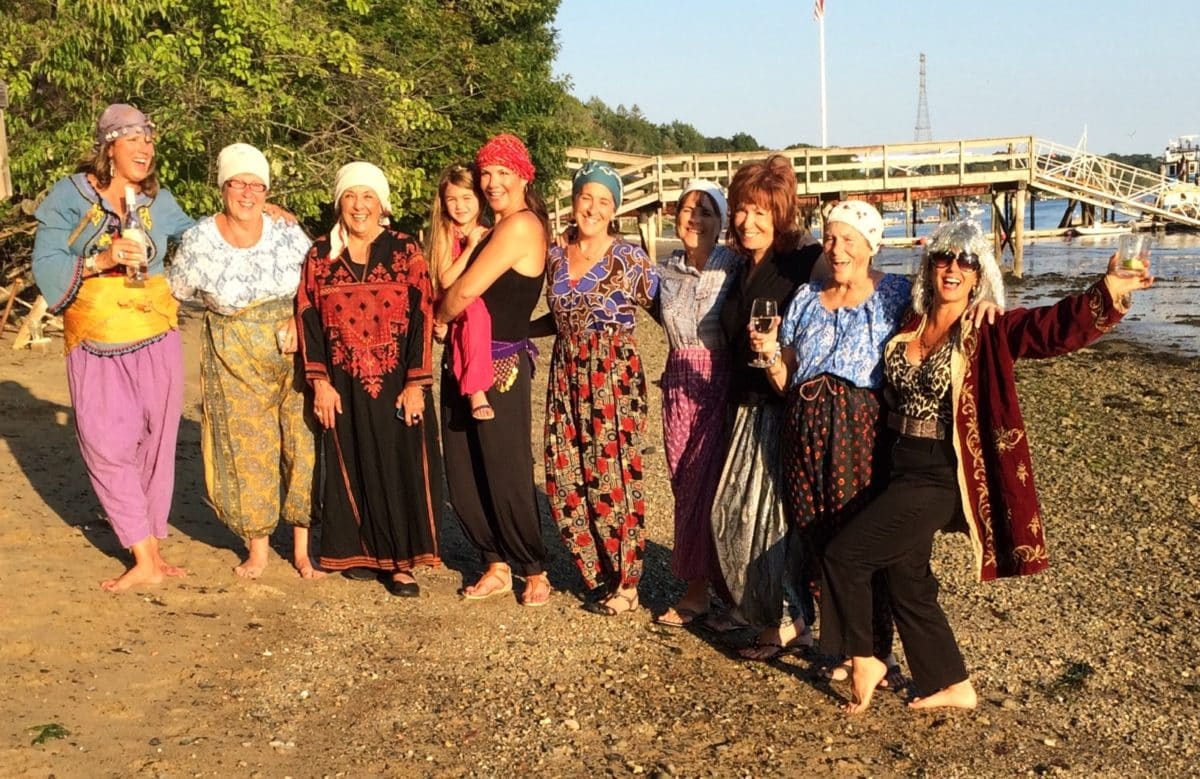Gathered together in a home on a hill overlooking the Piscataqua River in Maine, USA, three generations of women celebrated their love of Turkish food and culture.
It felt like we were on a magic carpet ride to a culinary adventure in an exotic land when we reunited to recreate our shared history and love of the country and people in Eastern Turkey. The memories were from forty years ago when we all had lived at Incirlick Air Force Base in Adana, Turkey.
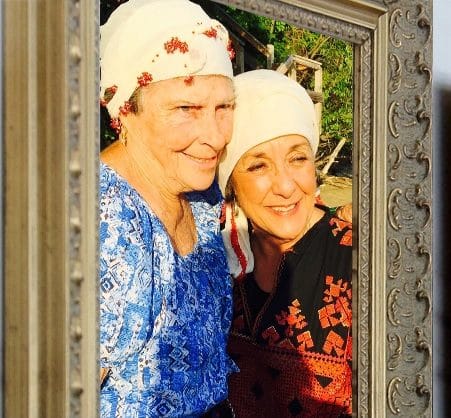
The hostess, Jan Desjardin, an accomplished gourmet cook, lives in Florida in the winter and spends summers at her home in Maine. Jan welcomed the travelers from Illinois, Maryland, Massachusetts, New Hampshire and a grandmother, mother, and third-generation daughter who had traveled from Albuquerque, New Mexico. It was an all-woman event with male family members excluded.
The guests came together because of their love of Turkey, a land rich in history, from Julius Caesar, who famously came, saw and conquered, to Saint Paul, who trekked the country spreading Christianity. They also celebrated that Turkey has some of the best authentic, fresh local cuisine they have ever tasted.
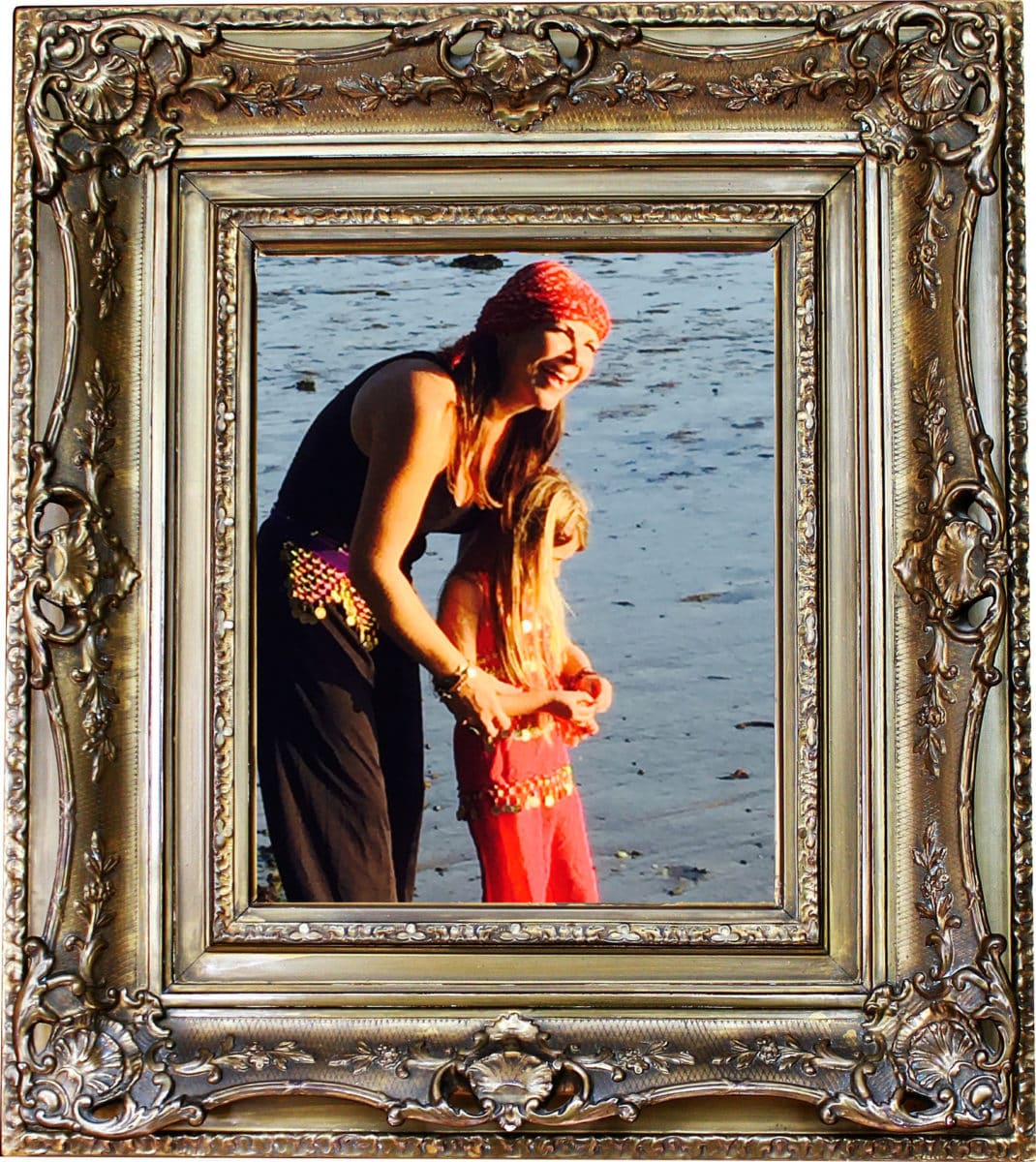
It was to be a weekend of kebabs and memories of shopping for copper and carpets. The people of Turkey are family oriented, easy-going and hospitable. In Turkey, there is a respect and affection within the family from youngest to eldest. The hours we spent feasting and laughing carried that Turkish tradition to Maine.


Small dishes similar to appetizers and tapas, mezze make up the first course of most Turkish meals. Jan, a skillful cook, had used spices with moderation but to great effect. Many of the ingredients, such as yogurt, that Americans have come to rely on in everyday cooking have originated in Turkey. The spread on the dining room table, in beautiful antique copper dishes, included olives, hummus, roasted red peppers, yogurt, dates, figs, pistachios from Gaziantep, feta cheese, goat cheese, lahmacun (Turkish style pizza), and lavas (large paper-thin bread). An array of drinks on the bar included raki – a traditional drink – wine, sparkling water, and cay (tea).
Great food and aromas filled the room, and after all the friends had arrived, talked, and mezzed we decided to walk on the beach to prepare our appetites for dinner.
The hostess had requested we dress in Turkish attire. By evening, everyone was dressed in Turkish clothes that had been purchased – in some cases, many years ago – in the covered bazaars of Turkey. They included classic head scarves, shava (baggy pants), an embroidered antique Bedouin dress, and belly-dance costumes.
We entered the Desjardin home to the welcome shouts of “merhaba!” (hello) and Turkish music blaring. The younger generation were already dancing a Turkish folk dance. They were enthusiastic and unselfconscious dancers, swiveling their hips and shaking shoulders. One of the women was waving a handkerchief and leading the circle dancers. This dance, called the halay, is seen all over the country at weddings, celebrations, and even today in restaurants. The Turkish flag was displayed in the open living room. After the kisses and hellos, I couldn’t help but notice the aromas and large spread of mezzes Jan had prepared.
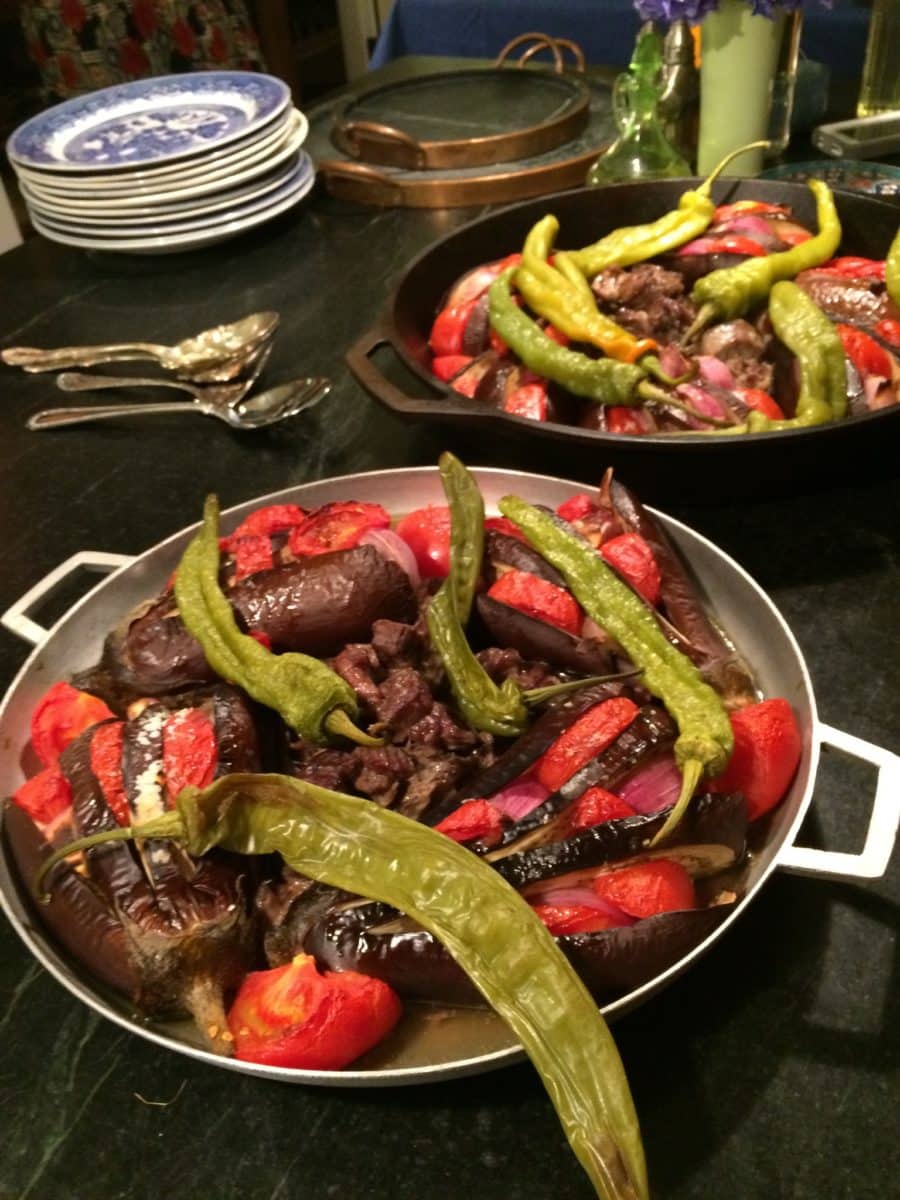
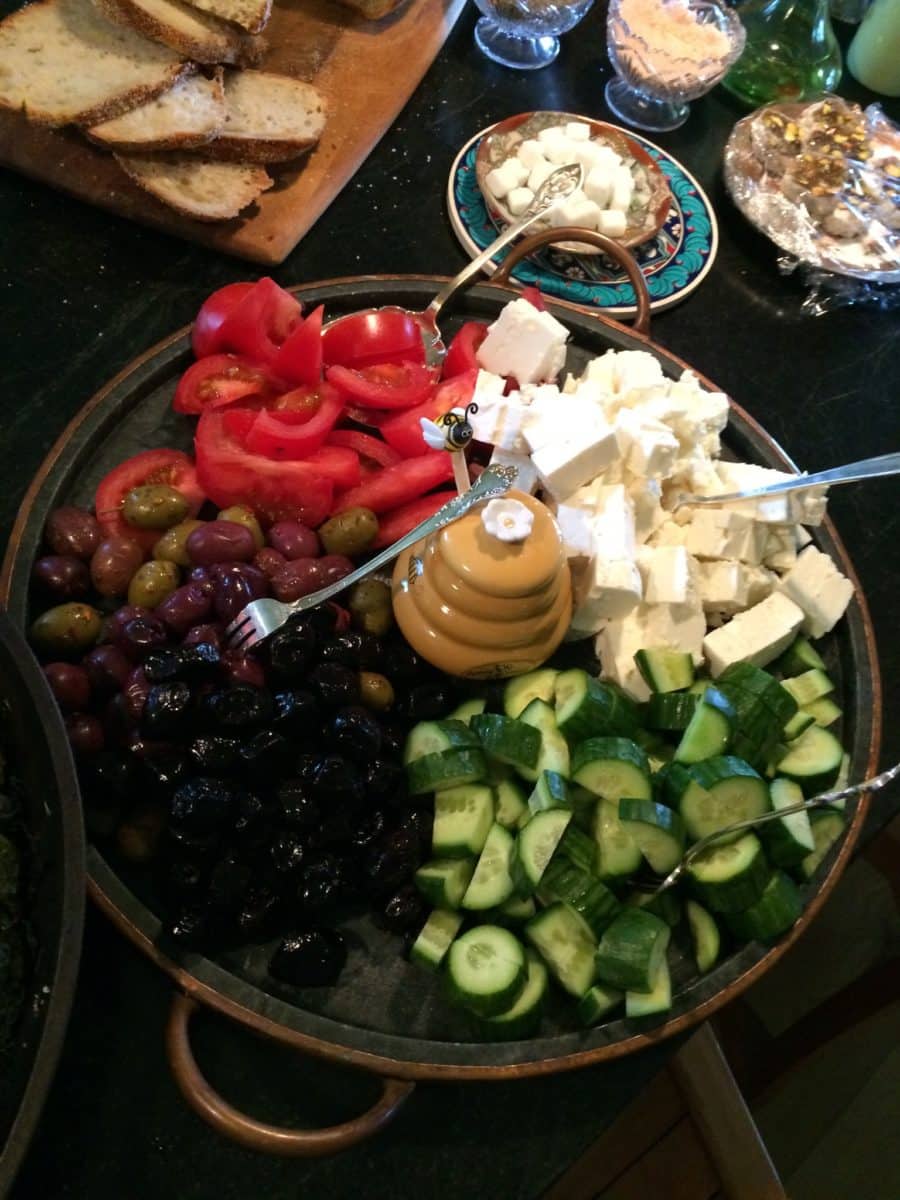
Small dishes similar to appetizers and tapas, mezze make up the first course of most Turkish meals. Jan, a skillful cook, had used spices with moderation but to great effect. Many of the ingredients, such as yogurt, that Americans have come to rely on in everyday cooking originated in Turkey. The spread on the dining room table, in beautiful antique copper dishes, included olives, hummus, roasted red peppers, yogurt, dates, figs, pistachios from Gaziantep, feta cheese, goat cheese, lahmacun (Turkish style pizza), and lavas (large paper-thin bread). An array of drinks on the bar included raki (a traditional drink), wine, sparkling water, and cay (tea).
Great food and aromas filled the room, and after all the friends had arrived, talked, and mezzed we decided to walk on the beach to prepare our appetites for dinner.
The hostess had requested we dress in Turkish attire. By evening, everyone was dressed in Turkish clothes that had been purchased – in some cases, many years ago – in the covered bazaars of Turkey. They included classic head scarves, shava (baggy pants), an embroidered antique Bedouin dress, and belly-dance costumes.
Candlelight and softly-playing classic Middle Eastern music welcomed us to the large dining room table. Turks have always eaten better than any other people in the Eastern Mediterranean. And that night we remembered why.
Our cook and dear friend, Jan Desjardin, gave us well-balanced meals that brought back memories from forty years ago of a rich, historic land, white sandy beaches, majestic mountains and extremely friendly, welcoming people. Our main course was Patlican kebab (a lamb and eggplant dish), complemented by rice pilaf with currants and pine nuts, yogurt, Adana salata (similar to a Greek salad) and hot ekmek (crusty bread). It is a common sight at Turkish feasts to serve rice separately spilling over the platter for a dramatic effect.
Red and white wine, Pellegrino water, and raki were offered as beverages of choice. Most commonly made from distilled grapes and flavored with anise, raki is the national drink of Turkey. It is served all along the Aegean coast, in mezze restaurants in small carafes with some ice and water. It is a clear liquid, but when you add ice it turns a milky color.

The ever classic dolmasi (stuffed vine leaves) were also served and devoured. The fragrant spicy dishes left us all sighing and wondering what was next!
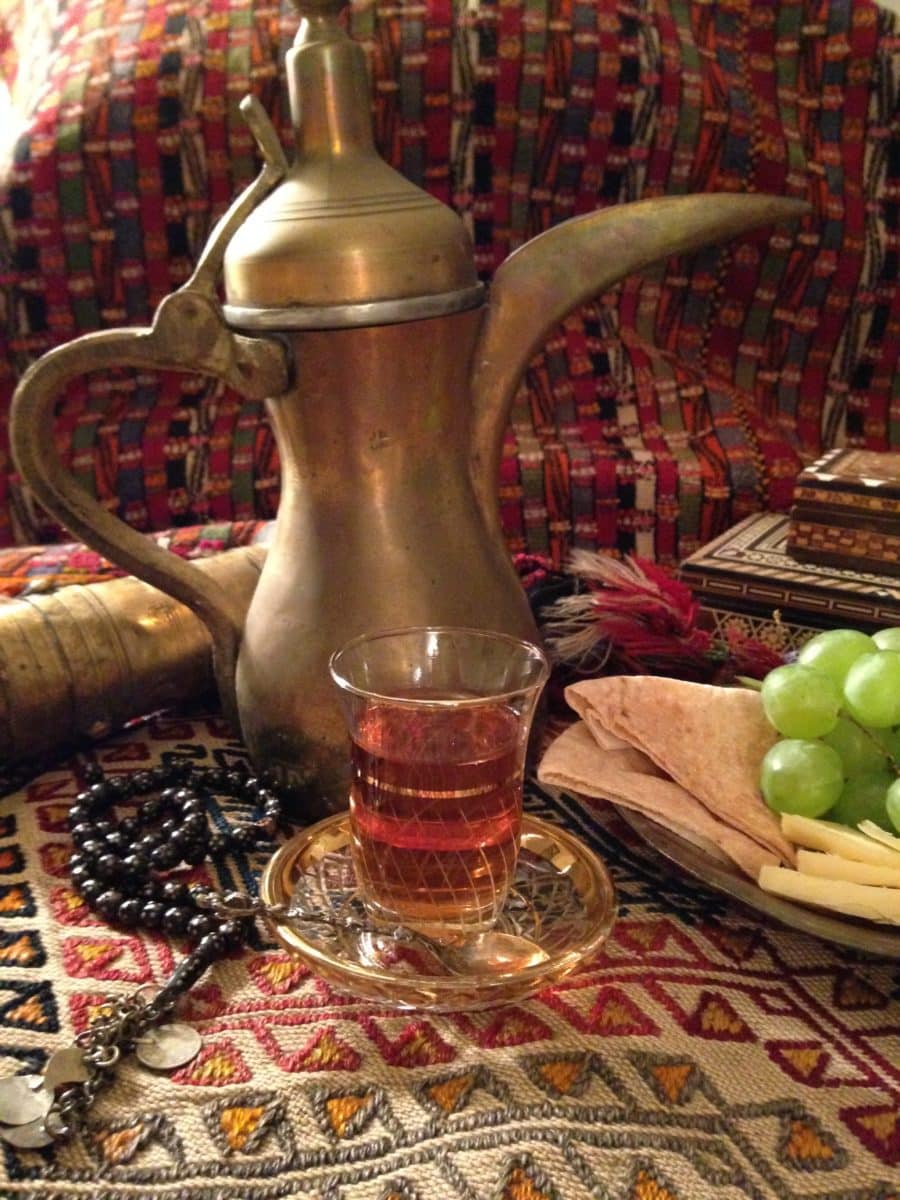
Dessert was a feast. The classic lokum, also called Turkish delight, came freshly-made from Sevan in Watertown, Massachusetts, a small bakery and grocer with a treasure trove of Middle Eastern treats. Jan had made a large tray of spectacular baklava, delicate and honey soaked. Fresh fruit, grapes, watermelon, and an assortment of apples, pineapple, and pears to cleanse our palates were also served with traditional small glasses of sweetened cay (hot tea).
The next morning we started with a classic Turkish breakfast of olives, sliced tomatoes, cucumber, yogurt and cheeses, all drizzled with olive oil and sprinkled with herbs and spices (cumin and sumak), and hot ekmek. Fresh, thick black coffee was offered, and the special roasted beans made for a strong cup.
My very favorite dish was the spinach and eggs that is most often eaten at breakfast. Jan used a recipe she learned from a dear Turkish friend.
The time passed too quickly, and the joy from the company of friends and family, the delectable, mouthwatering foods from the long ago Ottoman empire, the mutual love of the culture and people of Turkey will sustain us until our next reunion. ‘Til we eat again! ![]()
First published February 2016
